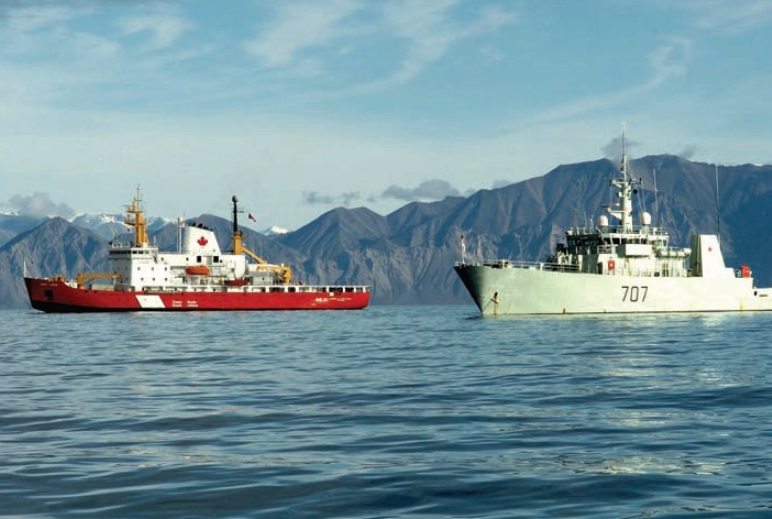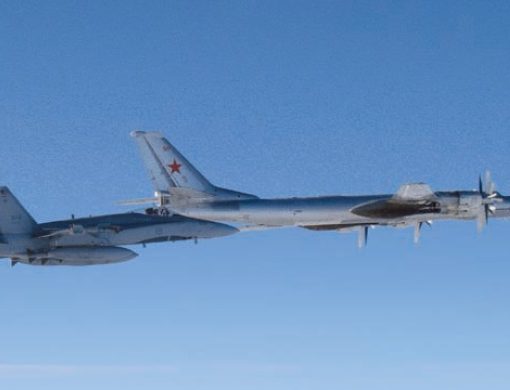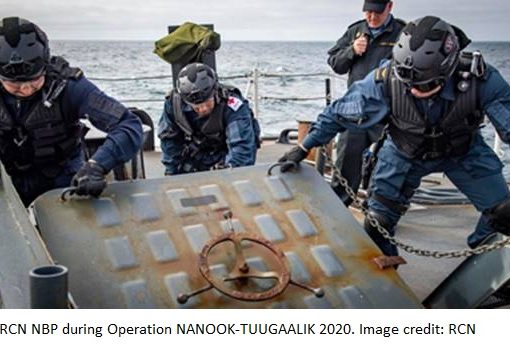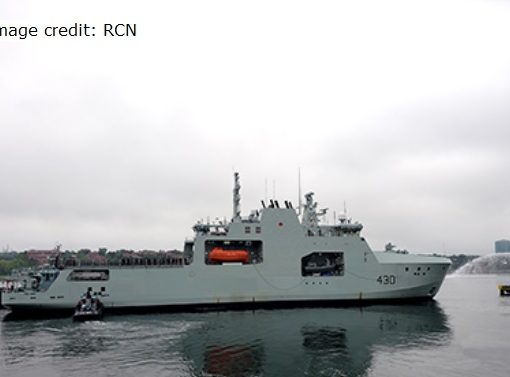Michael Byers and Stewart Webb have authored an interesting report published by the Canadian Centre for Policy Alternatives and the Rideau Institute entitled “Titanic Blunder: Arctic/Offshore Patrol Ships on Course for Disaster.” Byers and Webb claim that the government is heading for disaster with the AOPS project: the ships are being built to satisfy the wrong requirement and are a compromise vessel suitable neither for an arctic nor offshore patrol vessel role.
The report starts and ends well and raises good questions. It provides a useful summary of some of the publicly available information, but the underlying analysis is poor and leaves the conclusions without much support. Ironically some of their conclusions may prove to be prophetic. Certainly their concerns deserve a response.
The report paints a gloomy picture for the Royal Canadian Navy (RCN) using sweeping statements of policy concerns mixed with technical design detail. Unfortunately, the report’s handling of the technical aspects reveals the authors’ poor understanding of ship design and it risks drawing attention away from their important message. In some respects it compromises their argument.
The authors rightly attack the requirements for the AOPS. This is the right place to start because the design solution must respond to the capability requirement. If the design solution raises issues, the place to look for problems is with the requirements. Why are the coastal patrol and arctic operations capabilities being combined in one vessel? Is there a better solution? What might that solution be?
The report challenges the AOPS’s dual coastal and arctic patrol missions as something that could be better provided by two ships designs: one providing the arctic capability with the Canadian Coast Guard (CCG) and another providing coastal patrol with the navy. They attempt to prove their point by demonstrating the AOPS is not an optimal design solution. Certainly, combining arctic and coastal patrol missions will lead to design compromises, but what was behind the Government’s original decision to introduce arctic operations into the RCN’s stable of capabilities? It may have been cost.
Byers and Webb claim that the AOPS are too expensive. They offer patrol craft alternatives that are much less expensive. What their data reveals is that the arctic capability of the AOPS is the main cost driver. To gain a fair assessment of a two-ship solution one must first assume that the fast coastal patrol vessels are a match for the AOPS patrol capability (a point that should not be conceded too quickly) and then add the cost of buying ships to provide an arctic capability. Is the AOPS really more expensive? It might offer a lower capability in particular functions, but more analysis is necessary to demonstrate whether the AOPS or a two-ship solution might be the best capability value for the Canadian taxpayer. Costs are thrown around quickly in the report without providing the context and without being clear what they represent.
From a policy perspective leaving the arctic to the CCG is an appealing option for the RCN. It keeps the arctic expertise in one department and rids the navy of the need to develop and maintain an arctic capability and presence. Nevertheless, a consideration that may have weighed in the decision to place the AOPS with the navy is lower operational costs. At an Arctic Forum workshop in February 2012, a former senior naval officer suggested that two reasons that the Government wanted the AOPS capability in the navy was because it offered greater operational flexibility and it would be much cheaper to crew and operate over the design life. Given that the cost of operating and maintaining a ship is twice the cost of acquisition, this point may have some merit.
Byers and Webb offer a very weak section on the Kingston-class Maritime Coastal Defence Vessel (MCDV) in an attempt to demonstrate that conflicting requirements can lead to design compromises that affect overall capability. That conclusion is an axiom in ship design. Design is a compromise among different requirements including constraints such as cost. Anytime designers are faced with integrating requirements that drive the ship design in different directions, the solution is often a sacrifice of one capability over a higher priority capability, or a reduction in two equally important capabilities.
Unfortunately, Byers and Webb try to use the MCDV to demonstrate this simple point and make technical errors almost too numerous to count. The errors weaken their authority to present the case. The whole of their technical argument against the MCDV is a long-winded, disjointed diatribe. They should have limited their argument to a few good textbook examples on design compromise, and focus their analysis of the capability gap and the suitability of the requirements and constraints in the project. The descent into technical issues reveals their complete lack of understanding of ship design, the MCDV project requirement, and how requirements and design solutions interact. Some examples worthy of note:
- The top speed of the MCDV is an important design decision related to mission. It drives engine size, ship length, and fuel requirements. The installed power is a function of speed to the third power. Increasing the top speed from 17 to 25 knots, for example, requires 300% more power. Higher speed ships cost more to operate. Perhaps that influenced the choice of top speed?
- The choice of “mild steel” as the hull material has a very minor effect on top speed because it increases the weight of the ship. How the authors could think that mild steel was selected to reduce displacement (i.e. weight) is baffling.
- The authors note that other navies use wooden and fibreglass ships for minesweeping functions. While this is true, what the authors leave unsaid is that not all minesweepers are created equal. Ships designed to meet a different minesweeping requirements will be physically different. The MCDVs were never designed to enter a minefield, the vessels used a mission payload and remotely operated vehicles for their underwater inspection and mine countermeasures, hence the choice of mild steel. Comparing apples to oranges and then accusing the apples of not being oranges is an interesting circular argument.
- The MCDVs are unsuitable for open-ocean and overseas deployment because the requirement for which they were designed limits their operational capability to coastal areas. Since open-ocean and overseas deployment was never part of the operational requirement, the author’s challenge can only indicate that they dispute the capability requirement. Yet not a word is said on that issue.
Byers and Webb’s poor understanding of the technical issues of the design weakens the whole section. They raise important issues whether the MCDV design was an optimal solution for the operational requirement. They should have concentrated their analytical capability on the requirement, and whether the requirement was an accurate statement of the actual need. Their whole section on the MCDV does nothing to support their later contention that a two-ship solution should be favoured when a ship design has conflicting requirements. A better question to ask is whether, with hindsight, the project was given the right operational requirements; for example, the top speed and the operationing area?
In general, ship design is fraught with conflicting requirements; compromise is essential. The key to finding an optimal design is understanding the priority of requirements and all the constraints. The MCDV Project Team had two key constraints: time and money. The design solution was cost constrained and the project was fast-tracked to meet an identified capability gap. The solution was not optimal, but the MCDV’s have logged many successful cost-effective hours for the country.
Of course, all this talk about ships has not delved very deeply into the actual requirements and the cost. It is too simple to say that the navy’s patrol mission could be satisfied completely by an existing coast guard design. Ship design is a complicated process. Proposed ship design solutions need to be validated and supported by good estimates. Without further work to support the claims of Byers and Webb, the real strength of their argument lies in the questions they raise. Is the AOPS design the best solution to the arctic and coastal patrol missions? Are the missions the right ones? And, does a two-ship or an integrated design offer Canada the better value?






One thought on “Titanic Blunder or a Good Compromise?”